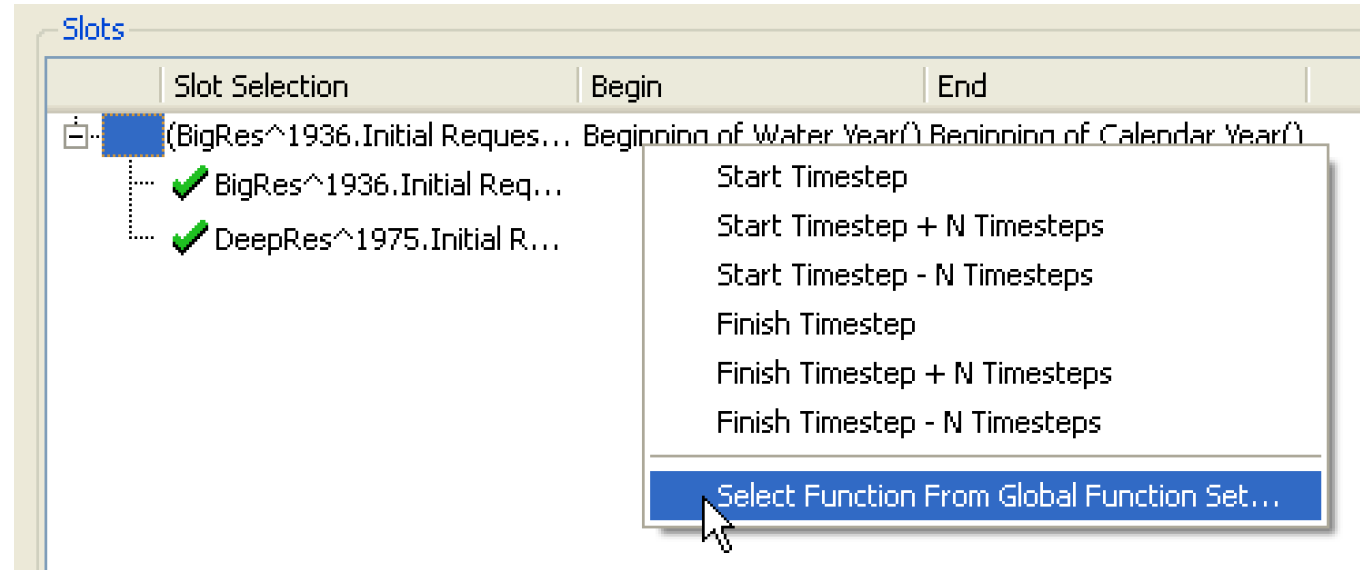DMI
Excel Database DMI Datasets
In the database DMI utility, an Excel Dataset was added to better allow you to interface with Excel. A database DMI can use an Excel dataset to import or export data directly from/to Excel. There are two main ways to specify how the data will be represented in Excel:
• Using Ranges and Name Maps: The user specifies Names Maps to correlate either Excel Named Ranges or Cell References to slots in RiverWare.
• Using Headers and Sheet Names: The user specifies that a standard Header naming convention will be used to correlate slots in RiverWare to data in Excel.
Within each of these two approaches, there are many user configurable options and features. See Excel Datasets in Data Management Interface (DMI) for more information.
Line enders
A new feature was added to the Control File-Executable type DMIs. This feature allows you to specify the line ending sequence that DMI's write. As specified in the DMI Editor, the choices are:
• Native (default for the current platform)
• Windows or
• Unix
See Line Ending in Data Management Interface (DMI) for more information.
RPL functions to specify Begin/End dates
For Database DMIs, you can now specify the slot selection’s Begin or End date with a RPL function defined in an opened Global Function Set. The function must not have any arguments and must return a fully specified datetime variable.

See Slot Selection in Data Management Interface (DMI) for more information.
Status Dialog
A more informative status bar is now available during DMI execution. This dialog shows information on the DMI that is executing, the slots that it is processing and the location of the data. Because this dialog has minor impact on performance, especially when processing a large number of slots, it is optional and by default is not shown. This status dialog can be shown by toggling on the menu DMI Show Status Bar from the DMI Manager.

Revised: 08/04/2020